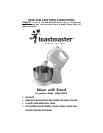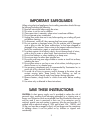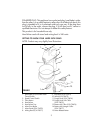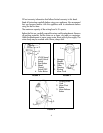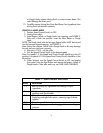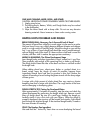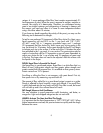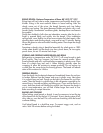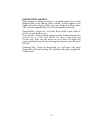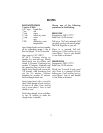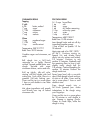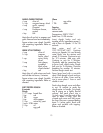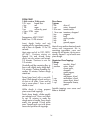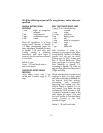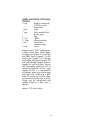
8
recipes. A
1
⁄
4
ounce package of Red Star Yeast contains approximately 2
1
⁄
4
level teaspoons of yeast. When the yeast is exposed to oxygen, moisture or
warmth, the activity of it deteriorates. Therefore, we recommend storing
yeast in an airtight container and refrigerating or freezing it. Measure out
the amount you need and allow it to come to room temperature before
using—this takes about 15 minutes.
If you have any doubt regarding the activity of the yeast, you may use the
following test to determine its strength.
To test for one package (2
1
⁄
4
teaspoons) of Red Star Active Dry Yeast, use a
liquid measuring cup and fill it to the
1
⁄
2
cup level with 110°-115°F/
43°-46°C water. Stir in 1 teaspoon granulated sugar and 1 package
(2
1
⁄
4
teaspoons) Red Star Active Dry Yeast. Leave your stirring spoon in the
cup. Set a timer for 10 minutes. As the yeast absorbs the liquid, it will begin
to activate and rise to the surface. If at the end of the 10 minutes the yeast
has multiplied to the 1 cup mark, it is very active. The yeast mixture may be
used in a recipe that calls for 2
1
⁄
4
teaspoons or more of yeast. Remember to
adjust your recipe for the
1
⁄
2
cup of water and 2
1
⁄
4
teaspoons of yeast used
in the test. The sugar does not need to be adjusted. Add this mixture with
the liquids in the recipe.
FLOUR: Bread Flour Is Essential For Bread
Use bread flour in yeast bread recipes. Bread flour is a white flour that is a
blend of hard, high-protein wheats and has greater gluten strength and
protein content than all-purpose flour. It is available at most grocery stores.
Protein varies from 12-14 percent.
Pre-sifting or sifting the flour is not necessary with yeast bread. First stir,
then spoon into a dry measuring cup and level off.
The amount of flour called for in a yeast bread recipe is meant as a guide.
Dough is affected by heat, humidity, sugar, and altitude. If too much flour
is used, the bread may be very heavy and stiff. If too little is used, the bread
will not hold up and a low-volume bread will result.
FAT: Dough Enhancer And Conditioner
You may substitute in equal proportions solid shortening, real butter, or
margarine. Light and whipped margarines do not work well.
LIQUIDS: Activate The Yeast And Bind The Dough
It is important that the liquid temperature is 120°-130°F/49°-54°C. When
higher temperatures are used, the yeast activates too quickly and the dough
becomes too warm.



